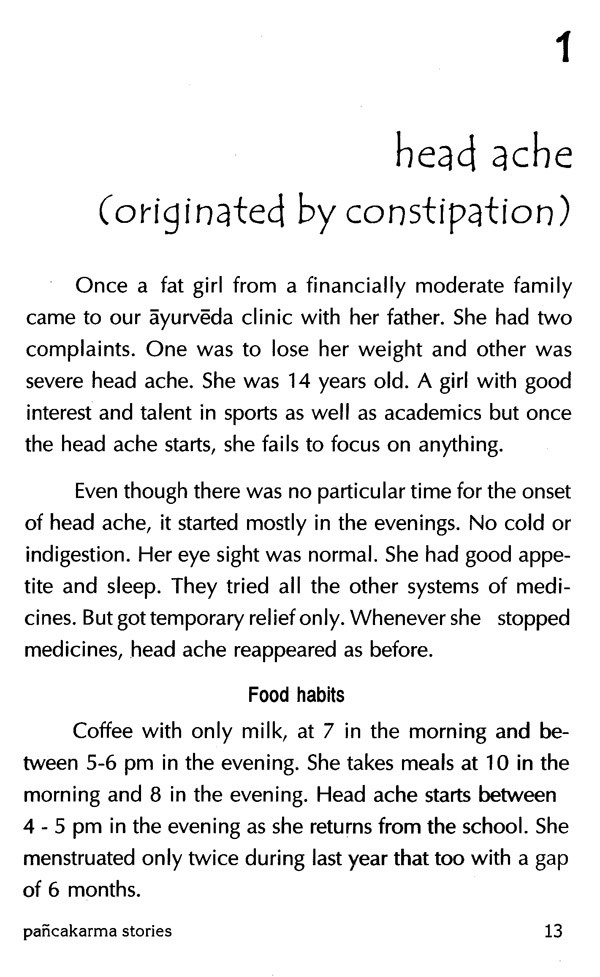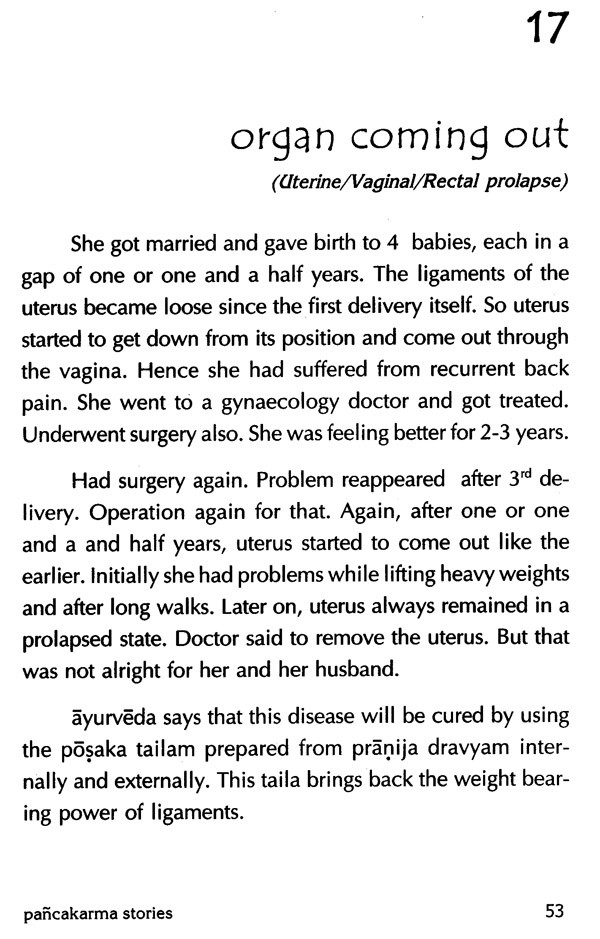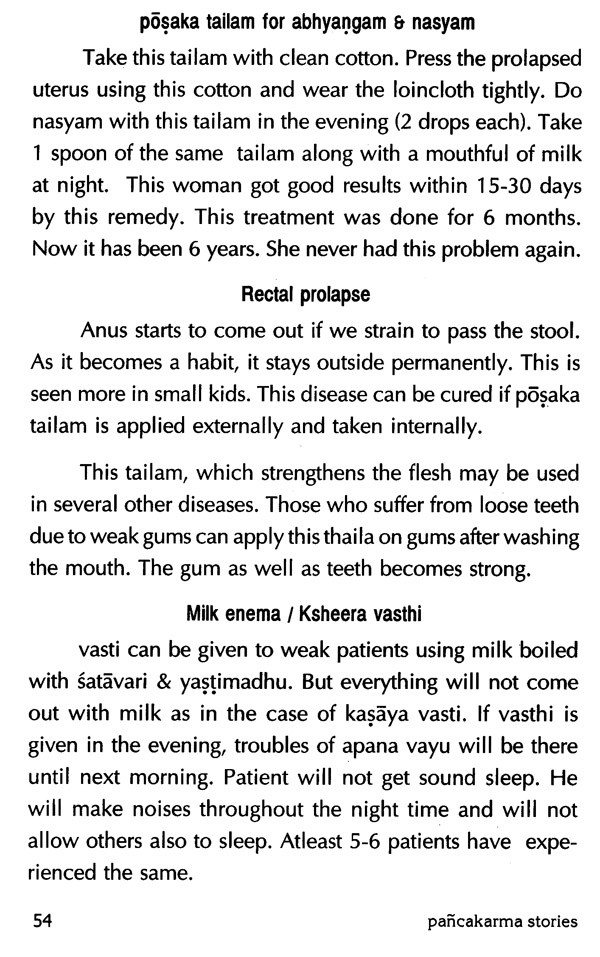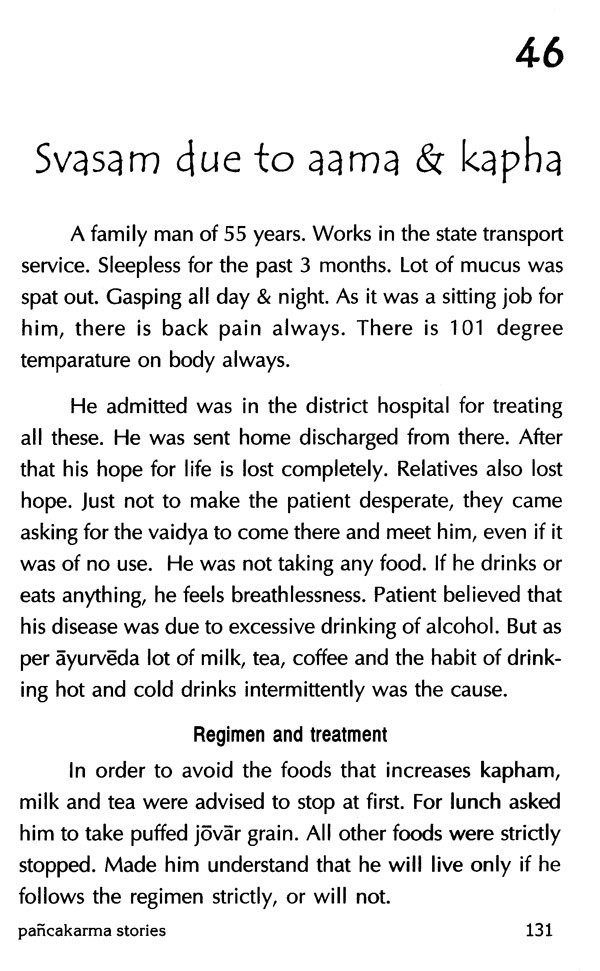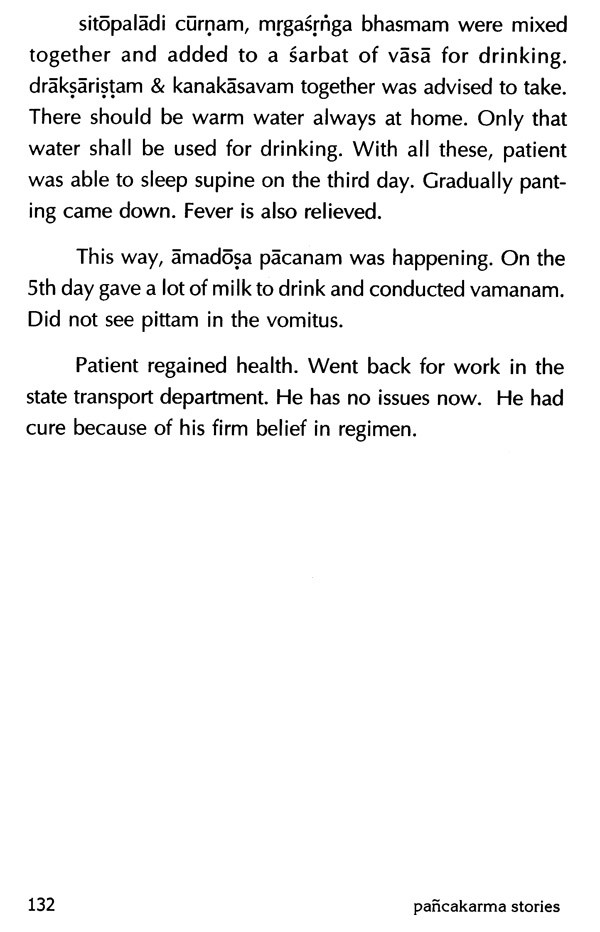
Panchakarma Stories- Reputed Treatments for Vata Pitta Kapha Dosas
Book Specification
| Item Code: | NBZ628 |
| Author: | Bindumadhav Sastri |
| Publisher: | Kunnath Mana Ayuveda Books, Kerala |
| Language: | English |
| Edition: | 2021 |
| ISBN: | 9788192017216 |
| Pages: | 176 |
| Cover: | PAPERBACK |
| Other Details | 8.50 X 5.50 inch |
| Weight | 210 gm |
Book Description
I read this book, "stories that enlighten on pancakarma", immediately after my graduation in ayurveda, which is redacted by Vaidya Bindumadhav sastri pandit. This narration of experiences prepared by his daughter vd.vidyatayi jalukar along with vd.gajanana sastri pandit, vd.prabhakar tanaji josi, vd.sasikant and vd.ra.devadhar is a favourite book for patients, vaidyas & students of ayurveda. As far as maharastra is concerned, he and his students along with this book was a reason for each vaidya, to restore confidence in the sastra they studied. For the same reason, I too keep this book close to my heart, while trying my own ways of treatment.
Maharastra region had a rich heritage in medicine. In the domain of surgery, this has often become historical records. A nose reconstruction surgery performed by a marathi vaidya appeared with all details in Madras gazette in 1793. In october 1794, Gentlemans magazine in London, published article and sketch about this. Not only salyatantram, history says that other segments also were equally developed in that period. Inspite of perpetual invasions and changing regimes, Indian sastras had a lot of respect and influence among the public. To establish perfect domination & power, the changing foreign regimes were nourishing and recognising only their own systems, even in the field of science. In the beginning of last century itself, these attempts have become successful. Atleast in maharastra region, they could keep native systems and their custodians away from public attention and to ensure influence in the society in the domain of science. By that, the attention of students turned towards foreign sciences, which can extract higher respect in the society. With nobody to handover these scientific heritages in those times, signs of their extinction could be seen. Even then, like a monument hesitant to fall down, in some places they survived as special method, a social ritual or just as a theory. Thus in the first half of 20th century, in the field of ayurveda in maharastra, the picture we see is of a great medical tradition, shrunk down to a handful of neglected people.
This discontinuity of tradition made the institutionally qualified vaidyas to remain not exposed to practices. They explored only the world of texts instead of searching for teachers who prove by practice. Many wandered without a direction to proceed in the field of ayurveda, for want of practical experience. Some blindly followed english practices. The general public were looking at ayurveda vaidyas as quackes in those days. By such reasons, practice of ayurveda as a profession, was literally a battle for vaidyas.
Vd.Bindumdhava sastri pandit started his medical practice at this period, when there was no support from the goverment or from the people i.e., beneficieries of his service. He did not have a family tradition of medical practice. He learned ayurveda in the institutionalised scheme of learning. In 1922, he started his ayurveda education at goverment ayurveda mahavidyalaya at Ahmednagar. In those days, the course in ayurveda was integrated with english medicine. Most of those who completed the course, being easier, prefered to practice english medicine. Those were also the days when only some parts of the multifarious schemes of ayurveda were widely popularised. Some started diagnosis depending only on tests of urine & stool, some only on nadipariksa and so on. Some extended these partial techniques into treatment field also, such as pancabhautika cikitsa.
He was doing treatments with limited facilities, based totally on the knowledge recieved during the college days. Hence, all of his treatments are reflections of own logic and knowledge of sastram. His classes for the ayurveda students were not repetitions of basic principles or packed in slokas. Instead he taught, how to bring them into practice by understanding the inner meaning and implied meaning. He was the principal teacher in the government ayurveda college at Nasik for long time. The pharmaceutical company, "ayurveda pratisthan" of Nasik, which is founded and fostered by Vd.Bindumadhav sastri pandit, is an evidence of social commitment he had. Most of the medicines manufactured here, which is registered as a charitable society, are the formulations by Bindumadhav sastri. He was the founder and chief editor for long years for the marathi magazine ayurveda patrika, which is popular even now among vaidyas. His clinical practice was in Nasik and later in Mumbai since 1966. He expired in 1976 May 22nd. Even though this book was completed prior to that, it got published in the same year in December.
**Contents and Sample Pages**
